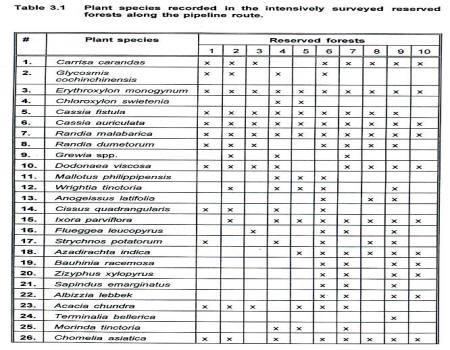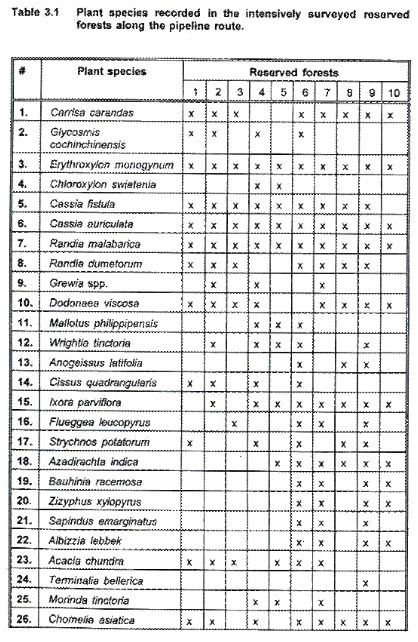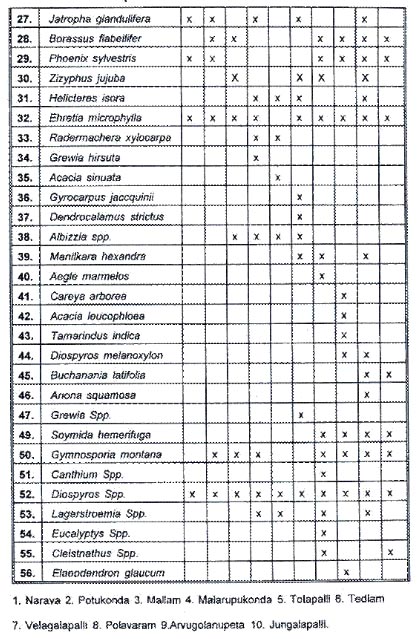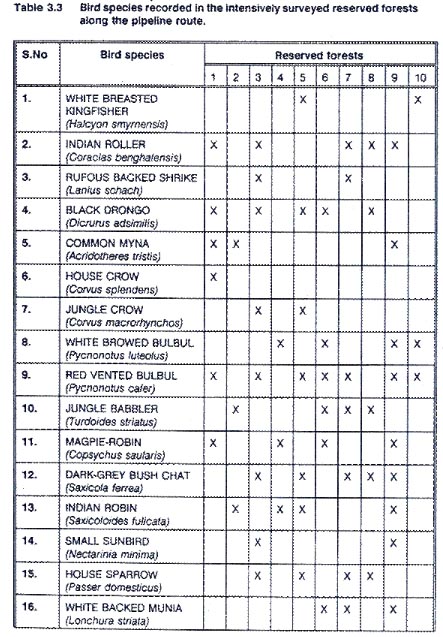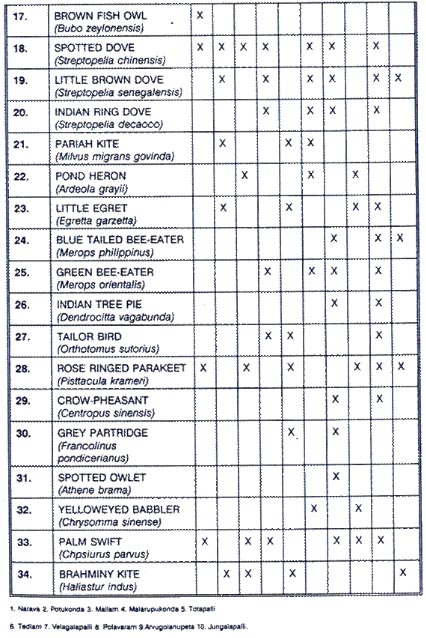Baseline Status
|
Predevelopment measurements of environmental quality through select attributes in the study area are essential requirements for post development audits and impact monitoring. The magnitude of anticipated direct impacts of the proposed pipeline were then largely determined on the basis of probable changes in the habitat (both spatial and qualitative), animal movement etc. in the areas enroute. 3.1 Status of Reserved Forests
Tedlam RF, Velagallapalli RF and Arvugolanupeta RF were comparatively richer in plant diversity (scale = 4) and had more than 30 species each (Appendix I - X). The RFs which had comparatively lesser number of species (15-20 species) were Narava, Potukonda, Mallam, Totapalli and Jangalapalli (scale = 2). The plant species that were recorded in all the RFs were Erythroxylon monogynum, Cassia auriculata, Randia malabarica and Diospyrous spp. (Table 3.1). Species such as Terminalia bellerica, Gyrocarpus jacquini, Careya arborea and Tamarindus indica occurred only once in any one of these RFs. The average height of vegetation in these RFs ranged from 1 - 3m. .1.1 Corridors between Reserved Forests
Historically, the flat terrain and land mass between the hillocks had forested areas. These RFs may have been serving as migratory corridors foe wild animals. However, the land use practices such as dryland farming, conversion of land into cultivation land, raising orchards etc. have already fragmented and isolated these forest patches from each other. Occasional migration of small predators such as jackal, fox, mongoose etc. may continue to take place in these land areas. These small predators benefit by their dependency on human settlement, livestock and poultry. 3.2 Status of Wildlife 3.2.1. Mammals Table 3.2 Mammalian species sighted or reported in the intensively surveyed reserved forests along the proposed route.
3.2.2 Birds In total, 34 species of birds were recorded in the intensively surveyed RFs (Table 3.3). Variation in bird distribution with respect to different seasons did not allow scale weighing for bird diversity. While Arvgolanupeta RF with 20 and Velagallapalli RF with 17 species were relatively rich, Potukonda RF and Narava RF were comparatively poor with 8 and 10 species respectively. Mallam RF, Totapalli RF and Tedlam RF had 13 species each. Red vented bulbul (Pyenunotus cofer) and spotted dove (Streptopelia ehinensis) were the most common species as they were encountered in seven RFs. Little brown dove (Streptotelia senegalensis), rose ringed parakeet (Psittacula krameri) and palm swift (Cypsiurus parvus) were encountered in six RF areas. Brown fish owl (Bubo zeylonensis), Indian tree pie (Dendroeitta frontalis) and crow pheasant (Centropus sinensis) were sighted in less than three RF areas.
|
|||||||||||||||||||||||||||||||||||||||||||||||||||||||||||||||||||||||||||||||||||||||||||||||||||||||||||||||||||||||||||||||||
Last Updated: October 7, 2015


